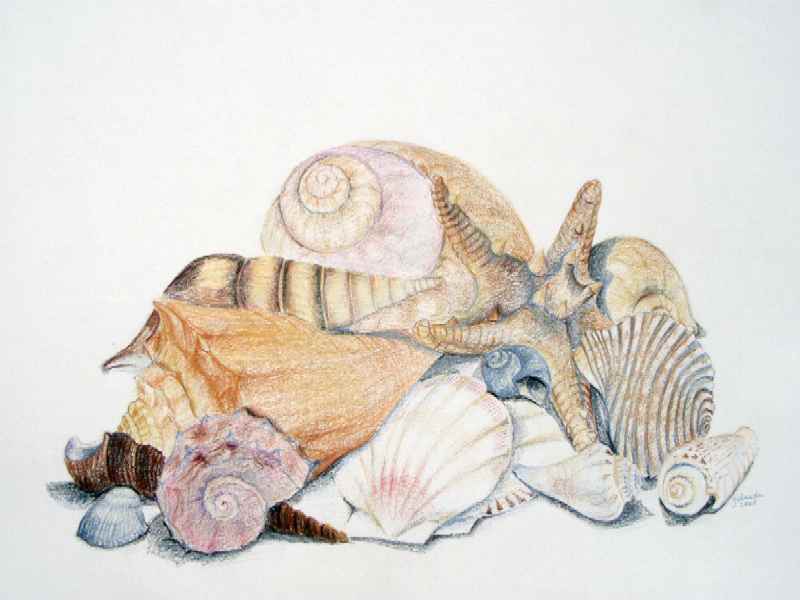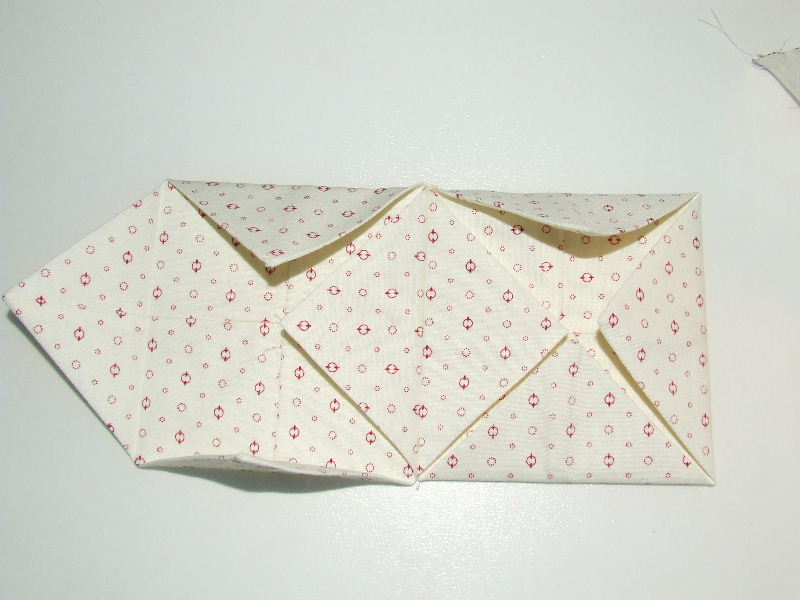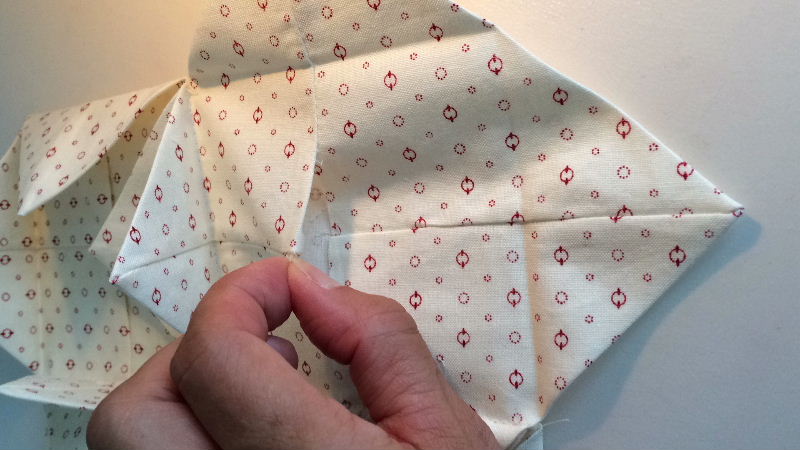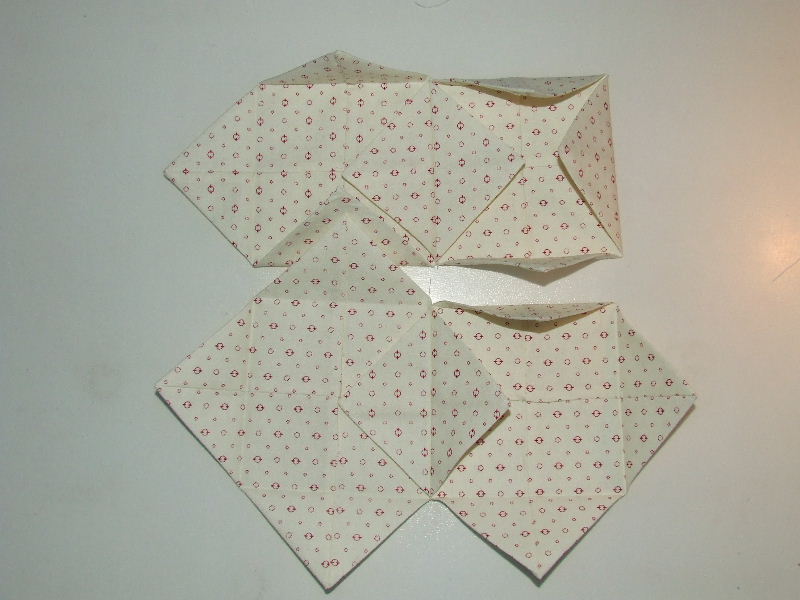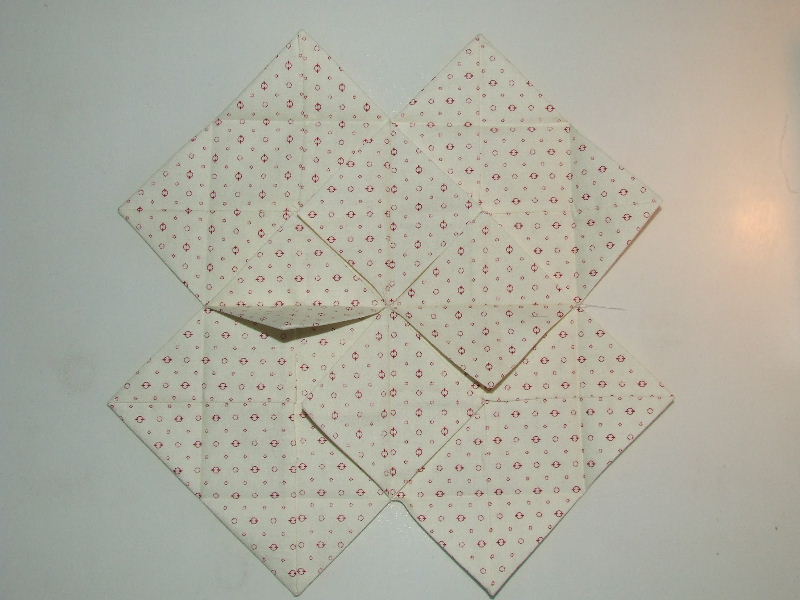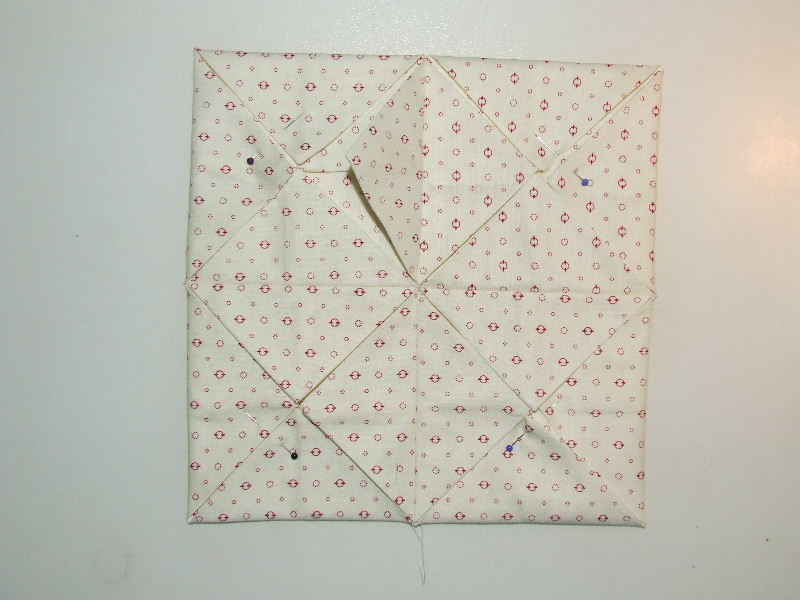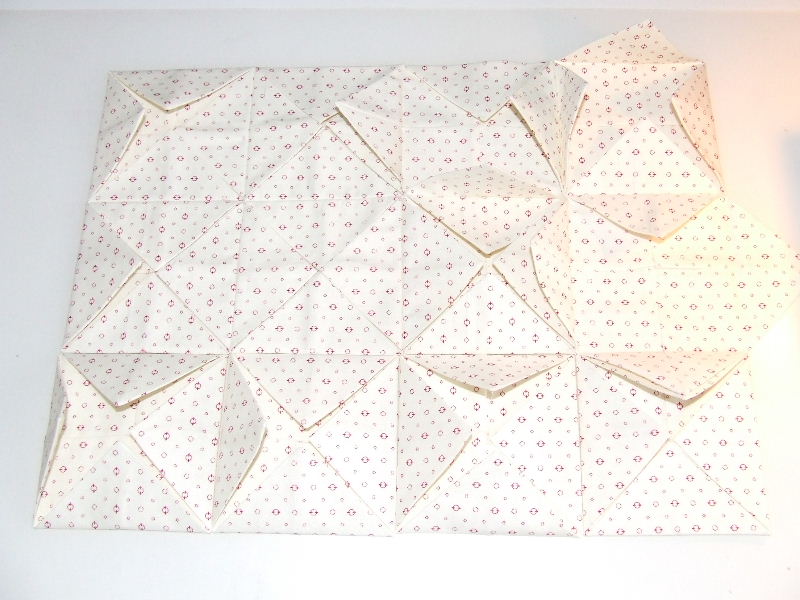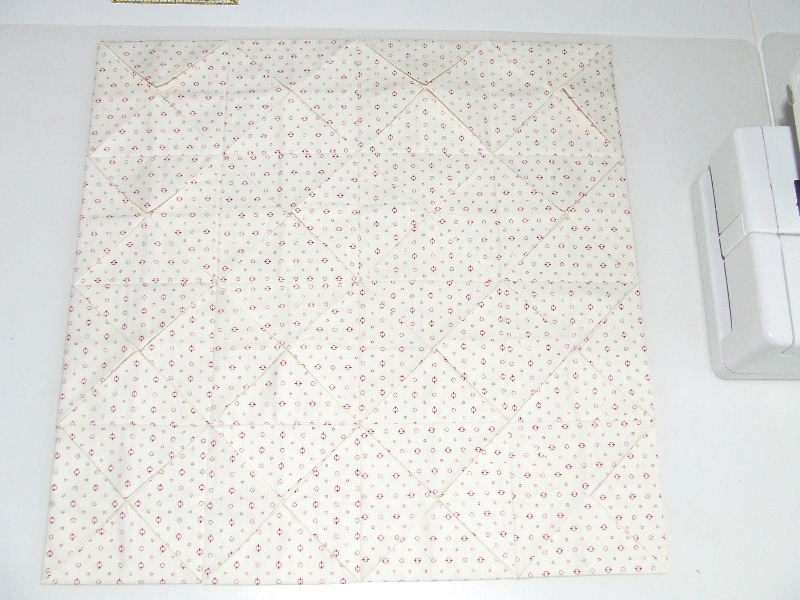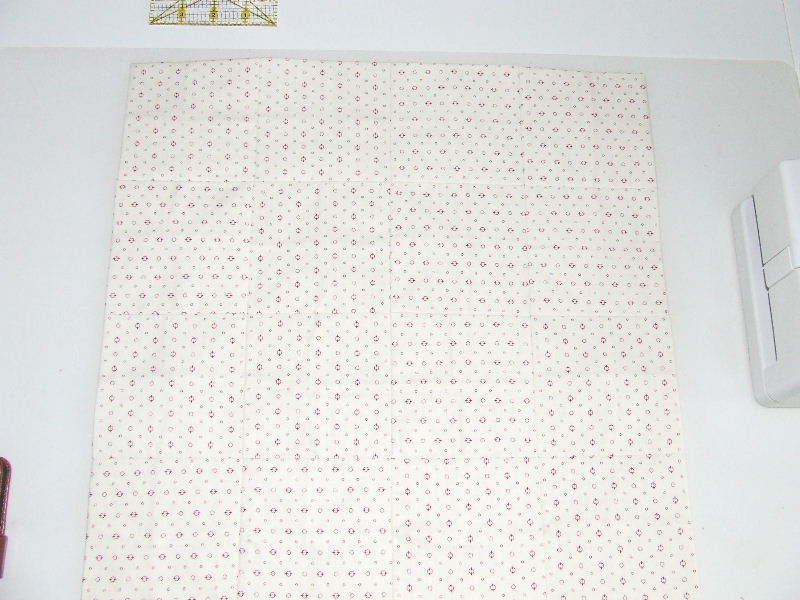| If done correctly, all corners can still be opened. I didn't align all squares in the same orientation. You can see beside that the fabric of the left square is rotated a quarter turn compared to the right square. You can choose to keep the orientation of all squares the same. |
The turning opening of all squares can remain open. It will later be hidden under the colored squares on top of the base. The Cathedral Window quilt is not lined and is essentially ready after stitching the colored squares. You then have five layers of fabric in most places. If you want a slightly thicker quilt, you can cut squares from batting and insert them neatly into each square through the turning opening. Do this only after sewing all squares together as described above. Cut the batting squares slightly smaller than 4 x 4 inches so they fit well. It's best to try this with a sample piece.
|
When you have joined two by two blocks, you can make a large square of four blocks in total. Align the points again and stitch along the pressed folds. Pay close attention to how you lay the fabric on top of each other. The visible seams of the squares are always on the outside. When the points are folded inwards, they are no longer visible, and you have a nicely finished back.
|
| The picture beside shows what it looks like when four squares are joined. Here, I made a square of two by two squares, but you can also make strips of joined squares first. It doesn't affect the result. |
| The shape may look a bit odd with all the points, but they will all be folded inwards and secured in the middle, making your piece a neat square again. |
| The picture beside shows that twelve squares have been joined. I joined two already joined squares to the piece shown above, creating a piece of two by four squares. Then I started making strips of four joined squares. Here you see one such strip attached to the piece of two by four squares. |
| All squares are now joined. A basic Cathedral Window quilt of four by four squares. Each square is about 10 by 10 cm. My base is now 40 by 40 cm. |
| The back looks neat. Since it's going to be a cushion cover, you won't see it, as there will be a backing. But if you make a bedspread with this method, the back of your quilt will be neat as soon as you're done. |



